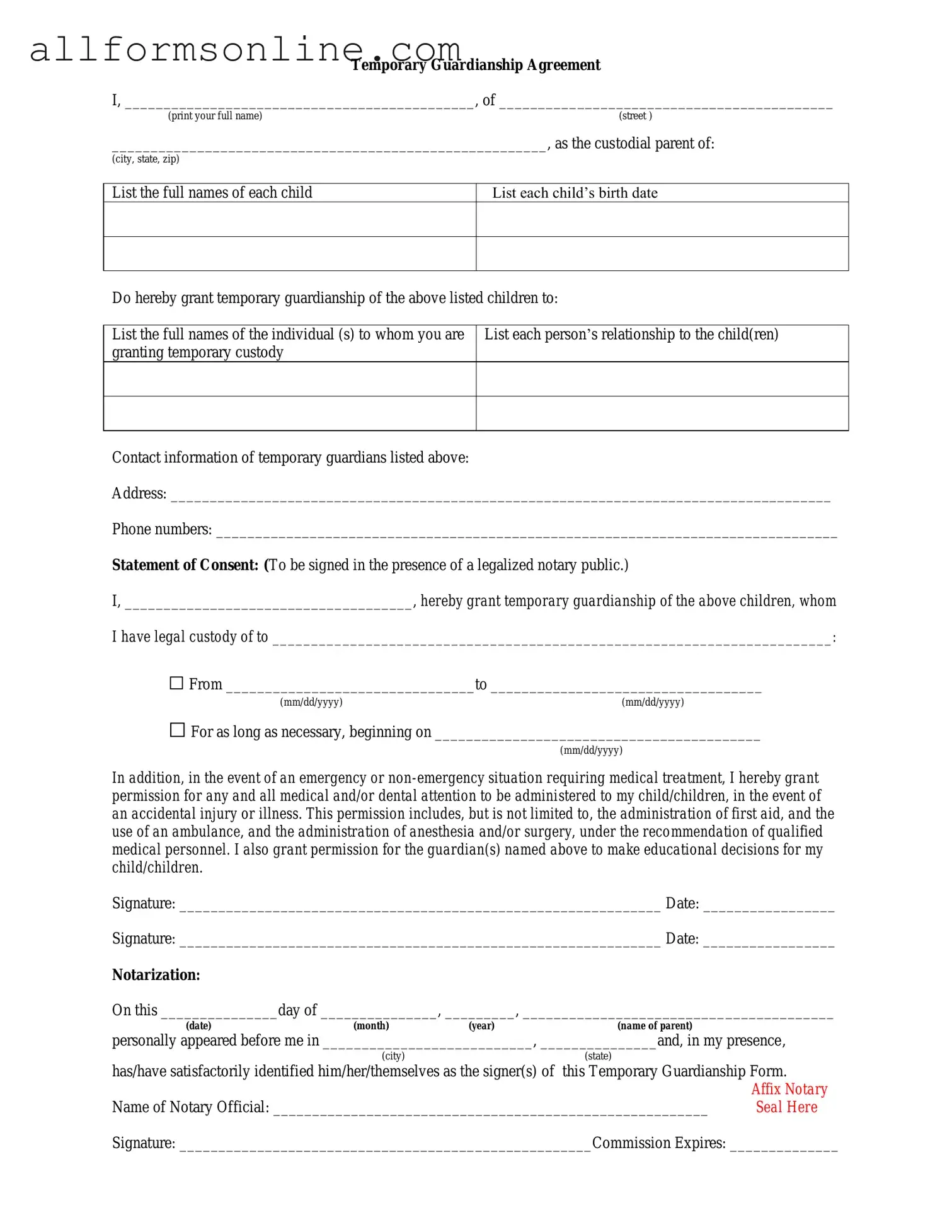What is a Temporary Custody form?
The Temporary Custody form is a legal document used to establish temporary custody arrangements for a child. This form is often utilized in situations where immediate decisions need to be made regarding a child's care, such as during a divorce or when a parent is unable to provide adequate care. The form outlines who will be responsible for the child's welfare and can help ensure that the child's best interests are prioritized during a period of transition.
Who can file a Temporary Custody form?
Generally, any parent or legal guardian of a child can file for temporary custody. Additionally, other relatives, such as grandparents or aunts and uncles, may also seek temporary custody if they can demonstrate that it is in the child's best interest. The specific eligibility criteria can vary by state, so it is essential to review local laws to understand who may file this form in your jurisdiction.
What information is required on the Temporary Custody form?
The form typically requires detailed information about the child, including their name, age, and current living situation. Additionally, the person seeking temporary custody must provide their own personal details, such as their relationship to the child and their reasons for requesting custody. The form may also ask for information regarding the child's other parent, including their contact details and any existing custody arrangements.
How long does temporary custody last?
Temporary custody arrangements are not permanent. The duration of temporary custody can vary based on the circumstances of each case. Generally, it remains in effect until a court reviews the situation and makes a determination regarding long-term custody. This review process may take place during a scheduled court hearing, which could occur weeks or months after the initial filing, depending on the court's calendar and the complexity of the case.
What happens after filing the Temporary Custody form?
Once the Temporary Custody form is filed, the court will typically schedule a hearing to review the request. Both parents or guardians will have the opportunity to present their case. It is crucial for the petitioner to gather any supporting evidence, such as witness statements or documentation, that demonstrates why the temporary custody arrangement is in the child's best interest. After considering all evidence, the court will make a ruling, which may grant or deny the temporary custody request.
